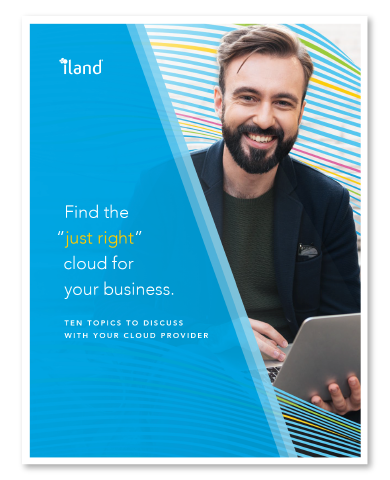Episode Summary
iland Director of Cloud Market Intelligence Brian Knudtson is joined by guests Scott Lowe, Damian Karlson, and Jennifer Susinski for a conversation about the concerns customers have with the ability of their company culture to adapt to the use of the cloud. They discuss the impact a company’s culture can have on its move to the cloud and vice versa, important signs that a culture is or isn’t ready for the cloud, and the disparity in concern over this issue between individuals and the companies they work for. Yes, change can be scary, but keep it simple: Just don’t be a jerk!
Panel
Cloud Conversations
Topic 1
[02:57] Let’s start by discussing how a company’s culture will affect the move to the cloud. What are important signs that the culture is ready or not ready?
Topic 2
[12:30] Let’s shift to the post-migration period. What effects could moving to the cloud have on a company’s culture?
Topic 3
[18:44] When I surveyed the VMUG members, I asked for both their perspective as an individual and what they felt their company was concerned about. The individuals weren’t concerned at all, but felt the company was much more concerned. The divide is interesting to me. Why do you think individuals aren’t concerned, but think their company is?
Cloud Bites
[01:25] “If I’m thinking about company culture in the cloud, I think it really depends on how a company is using the cloud.” — Damian Karlson
[04:03] “I think organizations that are too risk averse might lose critical opportunity and footing in the marketplace by not moving to cloud because their culture is not ready.” — Scott Lowe
[05:21] “It really depends on how the company thinks about IT. If they treat it as just another cost center, if they’re not treating them as a group of smart folks that you could work alongside in order to further the goals of your business, they are going to try to minimize risk. They are going to try to minimize cost. And there may not be any cultural changes.” — Damian Karlson
[06:01] “If IT is a necessary evil, you’re not starting in a good place.” — Scott Lowe
[11:17] “IT resources in most places are not abundant and spending time doing things like deploying Exchange doesn’t seem to make a lot of sense these days. So there’s got to be a point at which that cultural issue becomes a non-issue or is pushed to the side and somebody forges ahead.” — Scott Lowe
[13:53] “You now have to look at all these different containers that have UUIDs instead of VM names. You have to look at ports and data and APIs. It just becomes much more complicated. So, I mean, the company’s culture needs to adapt to that.” — Damian Karlson
[14:42] “It just kind of boils down to don’t be a jerk, right? Like, be an adult, work together, solve your problem, don’t fight.” — Damian Karlson
[15:19] “I think it’s about all the different teams coming together, seeing the bigger picture, and then moving forward in the best possible way for them as a team.” — Jennifer Susinski
[15:47] “There’s got to be some intentionality around a post-migration culture.” — Scott Lowe
[17:16] “Change is scary, but it’s good.” — Jennifer Susinski
[19:08] “I think the individuals research it more than the overall company. They want to put themselves in a position where they can be as successful as possible. They want to put themselves in a position where they’re seen as innovative.” — Jennifer Susinski
[20:19] “If you have people that are willing to push the envelope and can help an organization see things differently, that’s incredibly powerful.” — Scott Lowe
[21:44] “My personal thought is you can’t have a cloud adoption project if you’re not thinking long term.” — Jennifer Susinski
[25:39] “I don’t know if processes build culture, but culture absolutely influences process adoption. If your culture is highly risk averse or punishes failure, trying new processes is going to be really, really difficult.” — Damian Karlson
“I don’t know if processes build culture, but culture absolutely influences process adoption. If your culture is highly risk averse or punishes failure, trying new processes is going to be really, really difficult”
DAMIAN KARLSON
BUSINESS DEVELOPMENT MANAGER, VMWARE


Episode Asset
White Paper: How to Sell “Disaster Recovery” to Senior Management
Are You Having Trouble Selling DR to Senior Management? One possible reason could be our common attitudes towards risk. While people are risk averse and willing to pay to mitigate risk, they do so only when their own money is at stake. When company money is on the line, they’re far more willing to take risks.
As a Senior Analyst at Forrester Research has said, “Organizations are willing to accept far more risk than I would have ever thought possible.”
This white paper gives you strategies for getting on the same page as senior management regarding DR, including:
- Striking the use of the term “disaster” from your vocabulary and making sure management understands the ROI of IT Recovery.
- Speaking about DR the right way —in terms of risk mitigation.
- Pointing management towards a specific solution.



